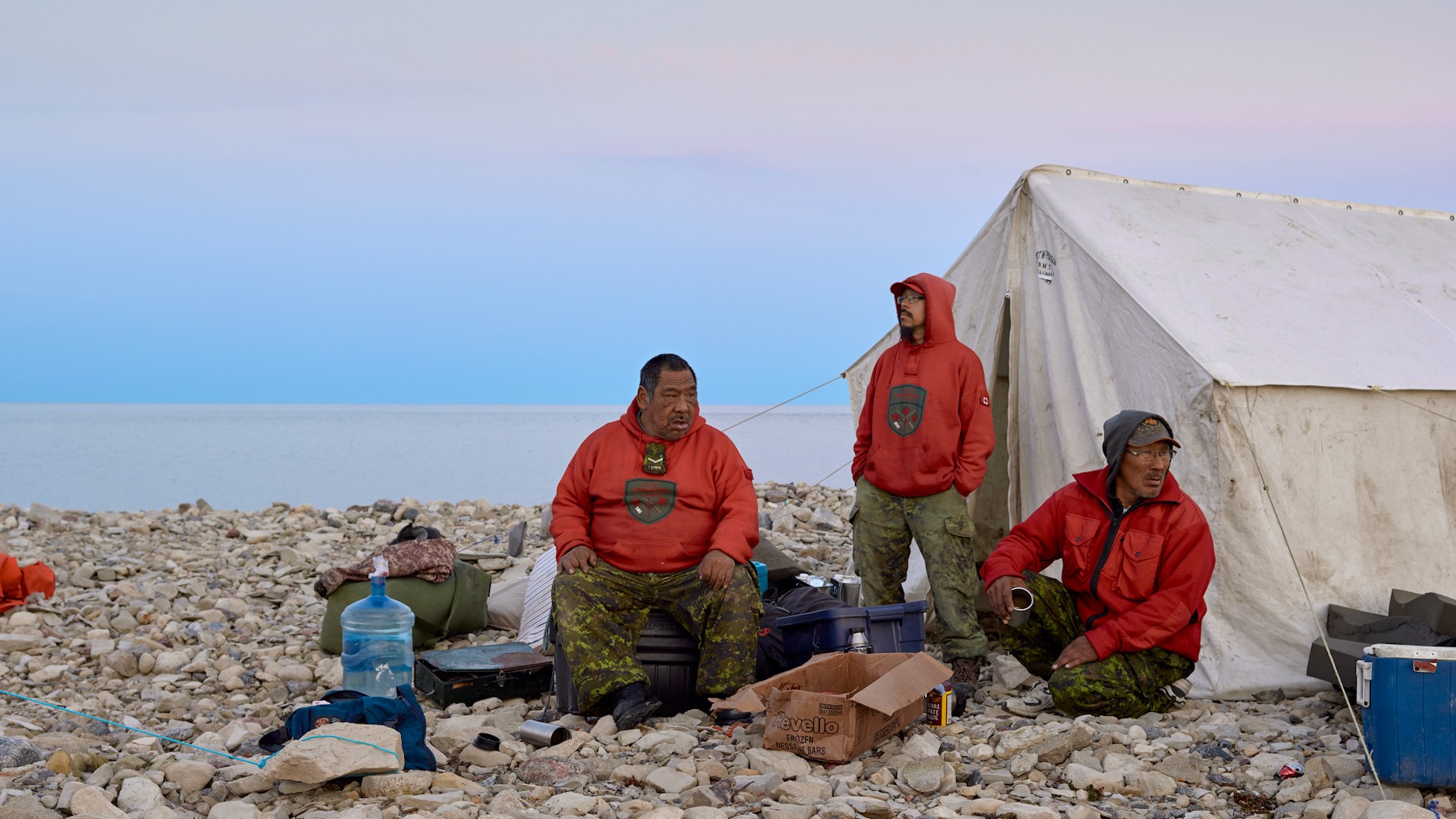Food insecurity is a problem all across the North. The image shows a price tag for a jug of orange juice at a grocery store in Iqaluit, Nunavut, on December 8, 2014. Photo by Sean Kilpatrick/
The cost of getting food up to remote northern First Nation communities has increased by up to five times during the pandemic, according to a charity that fights child poverty and food insecurity in the region.Emily Shandruk, executive director at Mikinakoos (“little turtle”) Children’s Fund, told VICE World News that shipping a pallet of food to fly-in or remote communities in northern Ontario increased from $200 before the pandemic to $1,000 during it. A trip between Sioux Lookout and the northern Mishkeegogamang Ojibway First Nation, only 230 kilometres northeast, can cost more than $3,000 by air, she said. The high prices will likely worsen what’s already a bad situation. The region grapples with exorbitant prices as a result of expensive and complicated shipping generally.“The general rule of thumb is that the cost of food for most things is about 1.5 times (or more) higher in remote communities,” said James Morris, founder of Mikinakoos. “If you buy something for $10 in the city, then it’ll be $25, $30 in the community.”Morris said there’s no concrete research yet to confirm whether prices of food in the North have gone up this year, but during the pandemic, grocery bills did increase nationwide.Morris is also the executive director of Sioux Lookout First Nations Health Authority, which works closely with Mikinakoos. Of the 33 communities the health authority covers, “only five or six” have all-weather road access, he said. The rest are fly-in only. That means food needs to be shipped into the North by plane or driven up during a short window of time each year in the winter when vehicles can travel across ice roads that form on frozen waterways.  Rising temperatures caused by human-made global warming is causing the ice to melt faster than ever before and freeze later. While communities usually enjoy up to two months of ice roads per year, some only reported 10 safe days this year. Morris said the government isn’t currently building roads for remote communities, either.“The governments don't care about Native people. In Canada, First Nations people are not a political priority,” Morris said. During the pandemic, many communities also had stricter quarantine rules than major Canadian cities, in part because they don’t have the resources to manage a COVID-19 outbreak; many northern Indigenous communities don’t have a pharmacy or hospital. Longer, stricter quarantines meant a shopping trip out to a major city like Winnipeg or Dryden—if it was even allowed—was a no-go for those who couldn’t afford to quarantine upon return. “Getting food to the kids is very difficult and the pandemic, global warming—it's all just making everything more difficult,” Morris said.Mishkeegogamang, for example, is a remote community with road access. But because of COVID-related public health restrictions, Mikinakoos had to look at flights to deliver food to communities that otherwise would have been drive-in. COVID restrictions also limited the number of people who could work at once, further complicating deliveries.Lorraine Pitawanakwat is a school principal in one of the remote communities covered by the Sioux Lookout health authority and supported by Mikinakoos’ backpack program that sends food hampers to children.Pitawanakwat has lived all over the North and knows firsthand how pricey groceries can be—she said a 1.5 litre jug of orange juice will cost three times more than in Toronto or Edmonton. She has also had to pay a dollar per potato and said a case of water bottles can cost $15—a major problem considering many northern First Nation communities have boil water advisories. “It’s hard for us to imagine the financial toll this has on families, if you think about decades of paying higher prices for every single food item,” Pitawanakwat said. VICE World News previously reported how in Alaska, Indigenous people have to pay $99 for a single turkey.Food insecurity in northern Indigenous communities is not new—First Nations, Métis, and Inuit are five to six times more likely to experience it. In parts of northern Ontario, rates of food insecurity are as high as 70 percent. And it’s only getting worse: globally, the climate crisis is worsening food security, and Indigenous peoples across Canada who cannot access traditional food sources are bearing the brunt. Follow Anya Zoledziowski on Twitter.
Rising temperatures caused by human-made global warming is causing the ice to melt faster than ever before and freeze later. While communities usually enjoy up to two months of ice roads per year, some only reported 10 safe days this year. Morris said the government isn’t currently building roads for remote communities, either.“The governments don't care about Native people. In Canada, First Nations people are not a political priority,” Morris said. During the pandemic, many communities also had stricter quarantine rules than major Canadian cities, in part because they don’t have the resources to manage a COVID-19 outbreak; many northern Indigenous communities don’t have a pharmacy or hospital. Longer, stricter quarantines meant a shopping trip out to a major city like Winnipeg or Dryden—if it was even allowed—was a no-go for those who couldn’t afford to quarantine upon return. “Getting food to the kids is very difficult and the pandemic, global warming—it's all just making everything more difficult,” Morris said.Mishkeegogamang, for example, is a remote community with road access. But because of COVID-related public health restrictions, Mikinakoos had to look at flights to deliver food to communities that otherwise would have been drive-in. COVID restrictions also limited the number of people who could work at once, further complicating deliveries.Lorraine Pitawanakwat is a school principal in one of the remote communities covered by the Sioux Lookout health authority and supported by Mikinakoos’ backpack program that sends food hampers to children.Pitawanakwat has lived all over the North and knows firsthand how pricey groceries can be—she said a 1.5 litre jug of orange juice will cost three times more than in Toronto or Edmonton. She has also had to pay a dollar per potato and said a case of water bottles can cost $15—a major problem considering many northern First Nation communities have boil water advisories. “It’s hard for us to imagine the financial toll this has on families, if you think about decades of paying higher prices for every single food item,” Pitawanakwat said. VICE World News previously reported how in Alaska, Indigenous people have to pay $99 for a single turkey.Food insecurity in northern Indigenous communities is not new—First Nations, Métis, and Inuit are five to six times more likely to experience it. In parts of northern Ontario, rates of food insecurity are as high as 70 percent. And it’s only getting worse: globally, the climate crisis is worsening food security, and Indigenous peoples across Canada who cannot access traditional food sources are bearing the brunt. Follow Anya Zoledziowski on Twitter.
Advertisement

Advertisement
